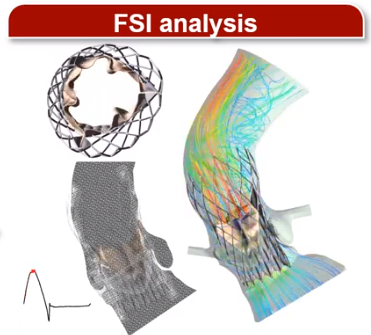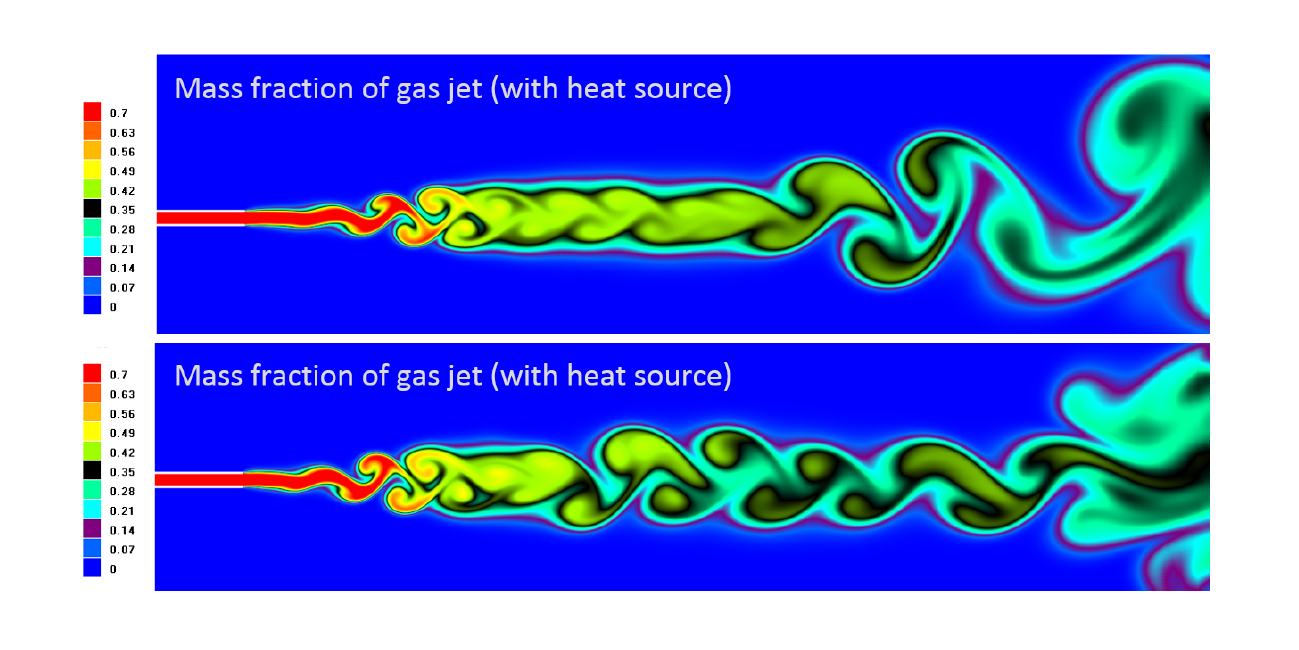
- Details
Excitation of a laminar gas micro-jet by acoustic impact and by pulse-periodic heat source was simulated using the FlowVision software package in 2D formulation at normal conditions.

- Details
A three-dimensional model of the multiphase flow based on the Eulerian–Eulerian approach was implemented using the FlowVision CFD package and, on this basis, a numerical algorithm for study of evaporation of liquid fuel was developed.

- Details
The supersonic wind tunnel facility SBR-50 at the University of Notre Dame was built in 2015 for experimental research related to shock wave (SW) interactions with obstacles and boundary layers (BL) as well as supersonic combustion and a plasma-based flow control.

- Details
This work focuses on detailed descriptions of DC discharge properties in supersonic airflow and its applicability in combustion simulations.

- Details
This mainly theoretical work is devoted to the study of the contribution of the cell-free layer (CFL) near the vessel wall to hemodynamics in a large coronary artery with stenosis to assess the relevance of CFL modeling to the needs of interventional cardiology.

- Details
This work belongs to the development of mechanical force-responsive drug delivery systems based on remote stimulation by an external magnetic field at the first stage, assisting the positioning of a ferrogel-based targeted delivery platform in a fluid flow.

- Details
This paper presents the results of the development of a mathematical model and numerical simulation of the ascent in the atmosphere of a vertically directed jet fed by the heat of condensation of watervapor on a hygroscopic aerosol introduced into the jet at the start.
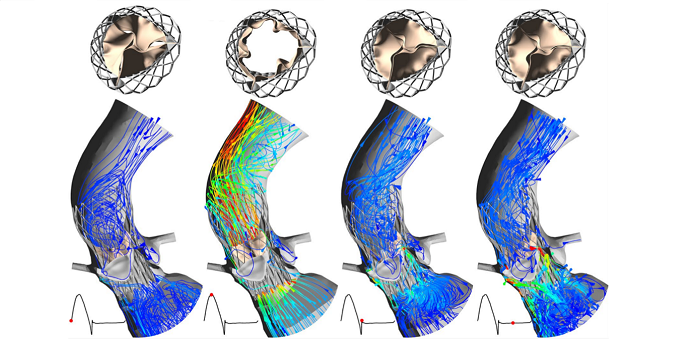
- Details
Transcatheter aortic valve replacement (TAVR) is a minimally invasive procedure that provides an effective alternative to open-heart surgical valve replacement for treating advanced calcific aortic valve disease patients.
However, complications, such as valve durability, device migration, paravalvular leakage (PVL), and thrombogenicity may lead to increased overall post-TAVR morbidity and mortality. A series of numerical studies involving a self-expandable TAVR valve were performed to evaluate these complications. Structural studies were performed with finite element (FE) analysis, followed by computational fluid dynamics (CFD) simulations, and fluid–structure interaction (FSI) analysis.
- Details
The use of numerical simulation and advanced means of computational hydrodynamics (domestic FlowVision software) for simulating the processes of flow and combustion in the systems for air and gas feeding, mixers, burners, and boiler furnaces has made it possible to advance the recirculation system and burners of the TETs-21 cogeneration plant and considerably reduce the NOx emissions.
- Details
Clearances and leakages through them play a vital role in determining the efficiency of positive displacement machines, especially of screw compressors. It is of interest to accurately predict the overall machine behavior including the leakage flows, even during the early design phases. CFD (Computational Fluid Dynamics) methodologies can potentially address this problem; however, the computational efficiency is limited by the well-known issue: dimensionality. This issue arises due to the fact that rotors are sized in tens of centimeters whereas the clearances are in the order of (sub) microns.
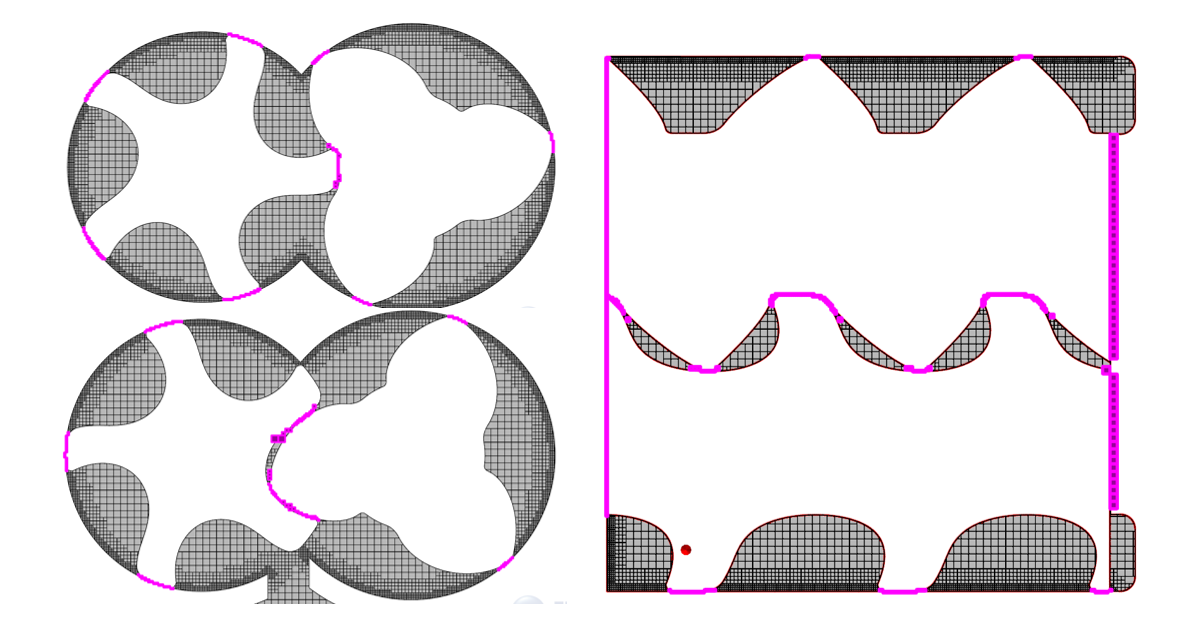
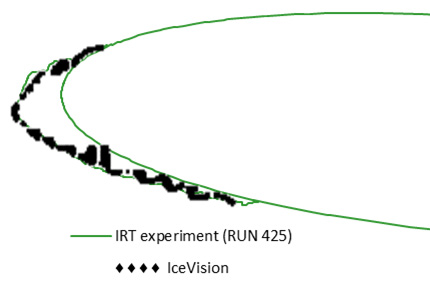
- Details
Certifying a transport airplane for the flights under icing conditions requires calculations aimed at definition of the dimensions and shapes of the ice formed on the airplane surfaces.Up to date, software developed in Russia for simulation of ice accretion and authorized by Russian certifying supervisory authority, is absent.
The paper describes methodology IceVision recently developed in Russia for calculations of ice accretion on airplane surfaces. This methodology is implemented in CFD software FlowVision used by numerous companies and universities in Russia and abroad.
- Details
Transcatheter aortic valve replacement (TAVR) has emerged as a life-saving solution for inoperable elderly patients with end-stage calcific aortic valve (CAV) disease [1]. However, valve migration, paravalvular leakage (PVL), and thrombogenic potential may limit its expansion into younger, lower-risk patients [2]. Previous numerical studies attempted to address these complications but neglected the valve post-deployment performances during heart beating [3]. This study utilizes Simulia Living Heart Human Model (LHHM) heart beating capabilities coupled with a fluid-structure interaction (FSI) simulation to evaluate TAVR complications.
